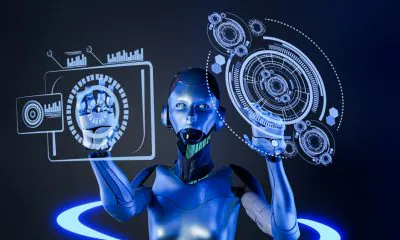Brain Machine Interface
Elon Musk, Neuralink, and Brain-Machine Interfaces

On Tuesday night, thousands watched the internet live-stream presentation of Neuralink. The three-hour event was the company’s first public presentation. Musk and his team showed the different aspects of the world-changing technology. The new brain-AI connection is something that has been pursued by scientists for years. While it was always strictly research, it will now be used on humans.
Neuralink was founded in 2016 by Elon Musk with the hope of one day integrating human and AI as one through implantable brain-machine interfaces (BMIs). The company has employed many high-profile neuroscientists and researchers, a lot of them coming from Universities. By July 2019, the company had $158 million in funding, much of it coming from Elon Musk himself. They currently employ about 90 employees.
The new Neuralink chip will collect signals in the brain with many thin wires. The company has produced what they call a safe and extremely small interface that is able to be implemented into the brain. It is small enough that it won’t cause any damage or trauma. Before Neuralink, brain-interface has shown results, especially with parlyzed individuals being able to move robotic limbs with their minds, but it was very complicated, included big wires, and had to be supervised by a scientist. Neuralink aims to make it safe, small, and able to be used without supervision.
The processor is a very small computer chip that is able to take electrical noise from neurons and turn it into clear digital signals. The chip only has one job, so it is very efficient and uses a small amount of energy. There is no need to change batteries or anything of the kind; it can last a long time. According to Andrew Hires, assistant professor of biological sciences at the University of Southern California, Neuralink “has taken a bunch of cutting-edge stuff and put it together.”
Electrodes were created by the scientists and engineers that are made from extremely thin and flexible polymer wires. These will be implanted into the brain. In tests done with rats, Neuralink was able to record about 1,000 neurons. This is a lot more than what is needed for things such as moving cursors on computer screens with your mind.
This new technology will be interfaced with the human brain by a new state of the art neurosurgery robot that has been developed by Neuralink. The robot very precisely inserts the wires into the brain. It is able to map out where all of the blood vessels are so that none of them will be pierced, causing damage or trauma. The robot is able to implant six of the strings per minute.
One of the first areas where this technology will be tested is among paralyzed individuals. Neuralink’s president, Max Hodak, wants to try the new technology on five different paralyzed people. They will initially try to type on a computer with their minds. These types of experiments have been done before, but it won’t stop there for Neuralink. The goal is for individuals to eventually be able to regain control of paralyzed limbs. Individuals who are not able to speak will also be able to access the part of the brain that is responsible for speech.
In the presentation, Musk talked about how they want the technology to be controlled by an app on your smartphone. This was a big point for them as they believe if someone has to go to a lab full of scientists every time to use it, that would defeat one of the main purposes which is giving people immediate access to brain integrated AI.
According to Neuralink, the procedure will be nothing like the image everyone has of brain surgery. There will be no clamps on the skull or need to be put to sleep. The technology will be able to be implemented while the individual receives only local anesthetic to the spot, there will be no heavy anesthesia and all of the complications or side effects that sometimes follow. There will also be no need to shave an individual's hair, and the area where the robot implants the technology will only be a small hole that will easily cover up.
After the long awaited announcement that Elon Musk has eluded to, everyone now sees what Neuralink has achieved. Neuralink is looking to test the new technology among parlyzed volunteers by the end of 2020, and Musk then wants to turn to the rest of the public after that.














